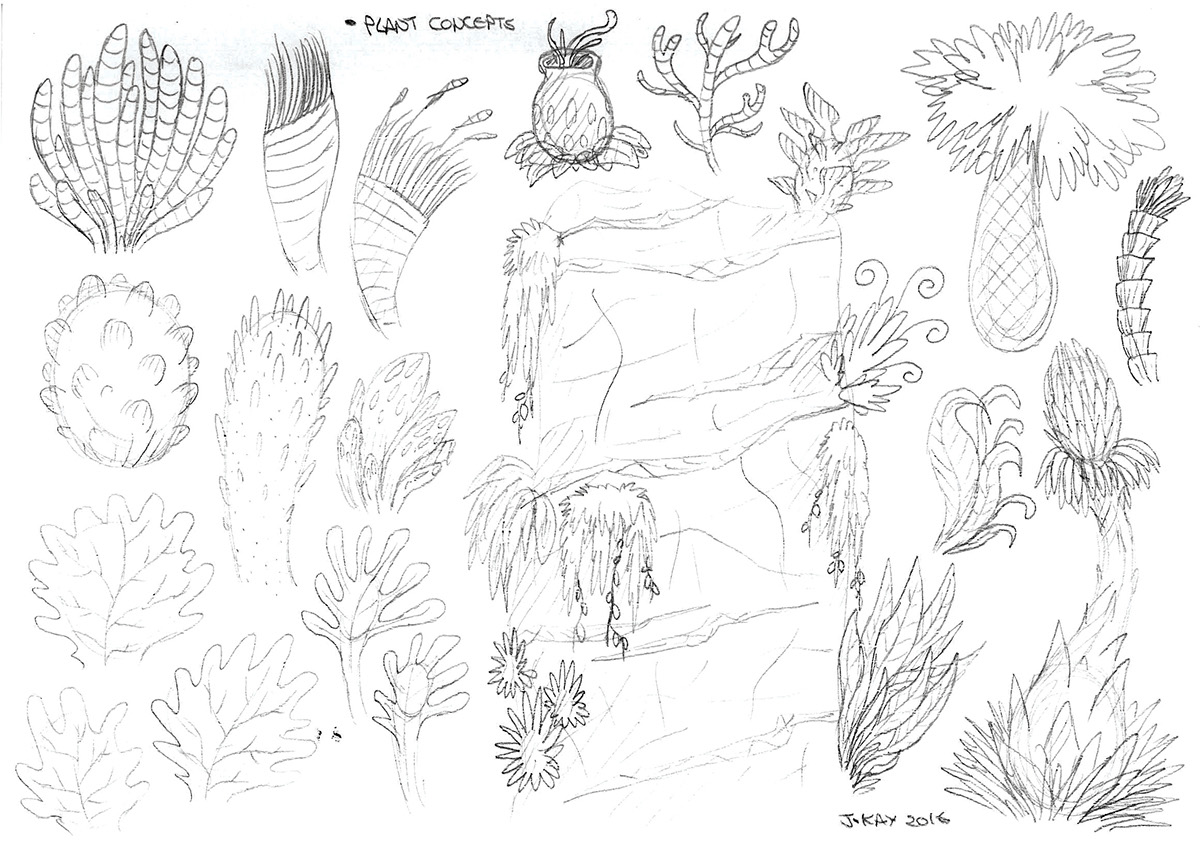The Adobe Round Trip project is an annual collaborative exercise organised by the New Zealand contingent of Adobe (which would stand to reason, given the name) - those who sign up contribute a short piece of 2D animation, 3D animation or VFX-enhanced film (at most, about 6 seconds long) that share a common theme or set of instructions; and can therefore be linked together in a seamless sequence, the last thing in one clip triggering the first thing in the next. Having gotten into AfterEffects-generated motion graphics in the last few years, I've gleefully created little Cosmos-themed animations for the project in both 2015 and 2016.... because hey, why not? And since I've recently sent off the 2016 clip for integration into the greater story, I now have enough finished and behind-the-scenes material to showcase both years' efforts here on Behance! So here we go....
First up is, as you would expect, my submission for the 2015 event - the idea behind that year's video was to follow a circular / spherical object as it moved from clip to clip, changing into whatever the local environment demanded as it did so. The object could do whatever we wanted within the clip, but it had to enter into shot from a specific point off-screen at the very beginining (to follow on from the end of the clip before) and then exit off-screen again in another pre-determined spot (to link up with the clip that followed). My circular object was a flying robot probe, which has the extreme misfortune to run into Gene....

My original 'storyboards' for the 2015 animation, showing the basic sequence of events I wanted to portray. The first version, I felt, had Gene and the probe too small, and almost secondary to the high-tech background; so I revised it to bring the focus in on them more clearly, move the scene outside to make for a simpler background, and add a bit of extra, interesting background detail (Murph popping up from behind a log and watching proceedings with curiosity, and perhaps a bit of bemusement). Of course, me being me - and the 1920 X 1080 AfterEffects composition being larger and wider than my storyboard frames - I ended up with a scene rather more like version one in scale (and amount of background) than version two. Oh well, I needed the extra room, I'd say, to give the probe sufficient room to fly in and get punched off-screen....


The animation model for Gene - reverse engineered from components of those I used for 'The Cosmos Monster Movie Survival Guide' - was fairly simple in construction, as he wasn't required to move around a great deal for the majority of the 'story'; only displaying explosive motion at the very end. A basic blink cycle, a few changes of expression, and a set of three arms (one of which was on-screen for only a single frame, to make the movement of Gene's arm snapping forward and down in an arc far smoother) sufficed to give him the necessary amount of..... well, animation.

Scene set-up for the final animation, showing Gene's wind-up in preparation for clobbering the probe
My contribution to the 2016 Round Trip (six seconds this time, rather than four) had to conform to the necessarily vague theme of 'trip' - this could be anything, really, from an epic voyage to a clumsy stumble; as long as someone or something was traveling from point A to Point B, and the final 15 frames served as a transition of some sort to the next person's clip. Which is why my Cosmosian leaps directly at the camera at the end, and the scene is swallowed up by the blackness of his mouth - because said mouth serves as an AfterEffects luma matte, through which can be seen the next clip!


Using my mighty geology knowledge, the first bit of set dressing I developed was a series of sandstone pillars of various heights and sizes for my character to jump along - the main bodies of the pillars are composed of a finer, muddy sandstone, while the thin, wiggly, darker-coloured beds are a harder, coarser-grained, erosion-resistant sandstone. They're based on similar beds I've seen at beaches around Auckland, and examples from Australia.


Livening things up further were a veritable ecosystem of Cosmosian plant life, chosen from out of my voluminous sketchbooks and based on things as diverse as coral, microscopic shells and bizarre seed pods. The environment they comprise exists on top of a huge plateau in the Cosmosian jungles, somewhat similar to the tepuis (table mountains) in South America. Assembling the 'film set' for this animation (nearly too wide for the outer edges of Illustrator's artboards was a very time-consuming process - considering how OCD I am - but it was well worth it.

Preliminary turn-around / model sheet, primarily so I could make sure I could get my character
(especially his eyes) looking right from every key angle
(especially his eyes) looking right from every key angle


My character model this time around (based on the 'Type One' Cosmosian) had to be considerably more complex, capable of spinning around from front to back - or vice versa - while at the same time jumping from one rocky pillar to another via a series of interchangable / animatable feet; on top of the standard blink cycle and kitset expressions. As such, my Adobe Illustrator model had well over thirty layers; at least 20 of which were right or left feet! In addition, my final animation also incorporated a set of antenna variants - slotted into my AfterEffects comp later on - so it would respond by bending back as he leapt into the air, and then going 'boi-oi-oing!' when he landed again on the next pillar.

Final scene set-up for my current clip, showing how all the various elements (rocks, plants, Cosmosian model)
go together. Jump, my little friend, jump!
go together. Jump, my little friend, jump!


